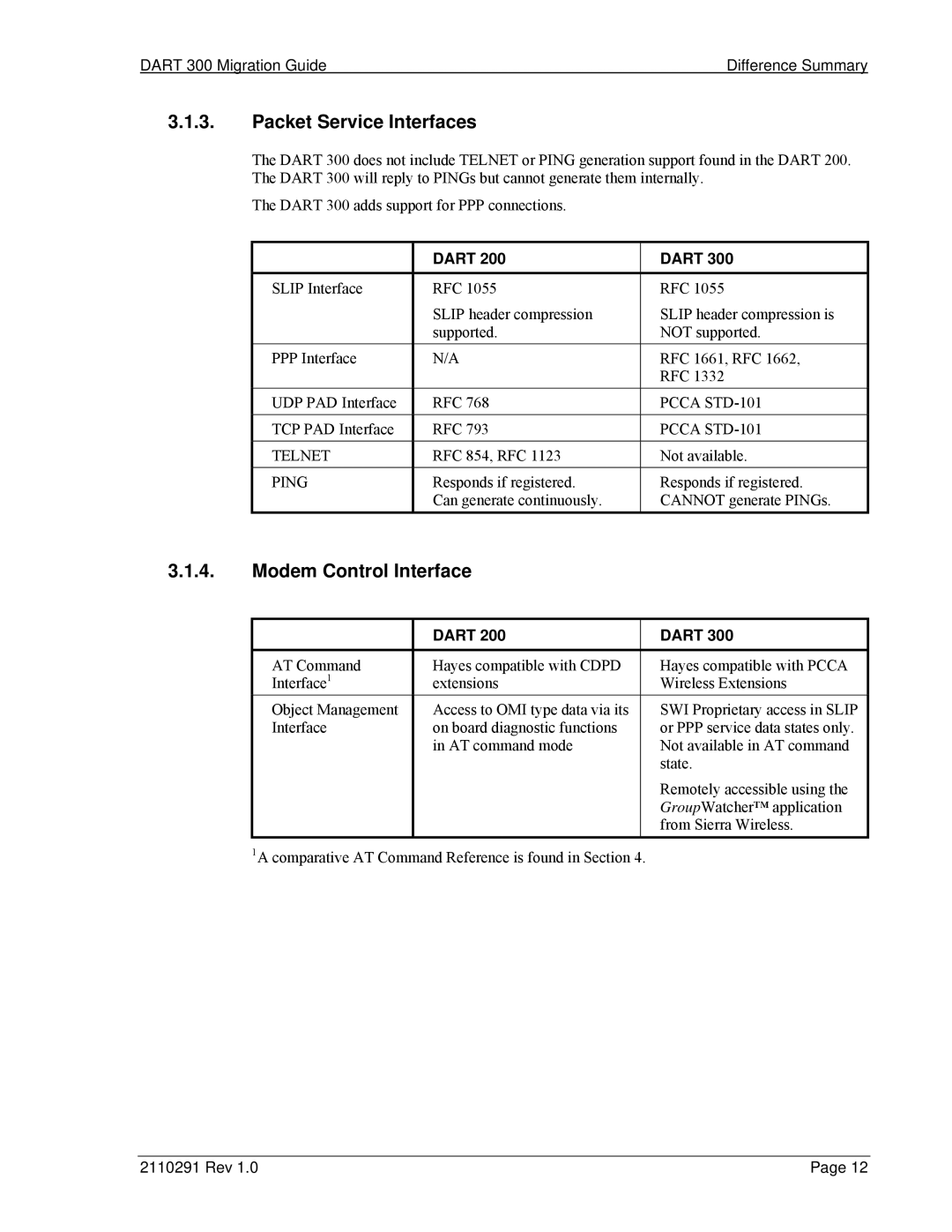DART 300 Migration Guide | Difference Summary |
3.1.3.Packet Service Interfaces
The DART 300 does not include TELNET or PING generation support found in the DART 200. The DART 300 will reply to PINGs but cannot generate them internally.
The DART 300 adds support for PPP connections.
| DART 200 | DART 300 |
|
|
|
SLIP Interface | RFC 1055 | RFC 1055 |
| SLIP header compression | SLIP header compression is |
| supported. | NOT supported. |
PPP Interface | N/A | RFC 1661, RFC 1662, |
|
| RFC 1332 |
UDP PAD Interface | RFC 768 | PCCA |
|
|
|
TCP PAD Interface | RFC 793 | PCCA |
|
|
|
TELNET | RFC 854, RFC 1123 | Not available. |
PING | Responds if registered. | Responds if registered. |
| Can generate continuously. | CANNOT generate PINGs. |
3.1.4.Modem Control Interface
| DART 200 | DART 300 |
|
|
|
AT Command | Hayes compatible with CDPD | Hayes compatible with PCCA |
Interface1 | extensions | Wireless Extensions |
Object Management | Access to OMI type data via its | SWI Proprietary access in SLIP |
Interface | on board diagnostic functions | or PPP service data states only. |
| in AT command mode | Not available in AT command |
|
| state. |
|
| Remotely accessible using the |
|
| GroupWatcher™ application |
|
| from Sierra Wireless. |
1A comparative AT Command Reference is found in Section 4.
2110291 Rev 1.0 | Page 12 |
